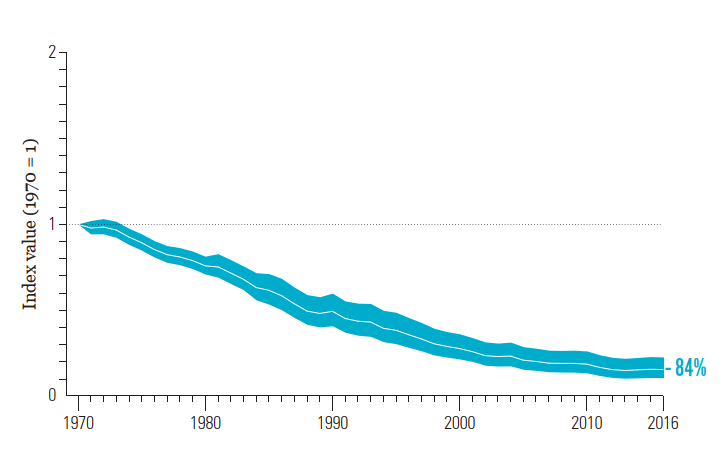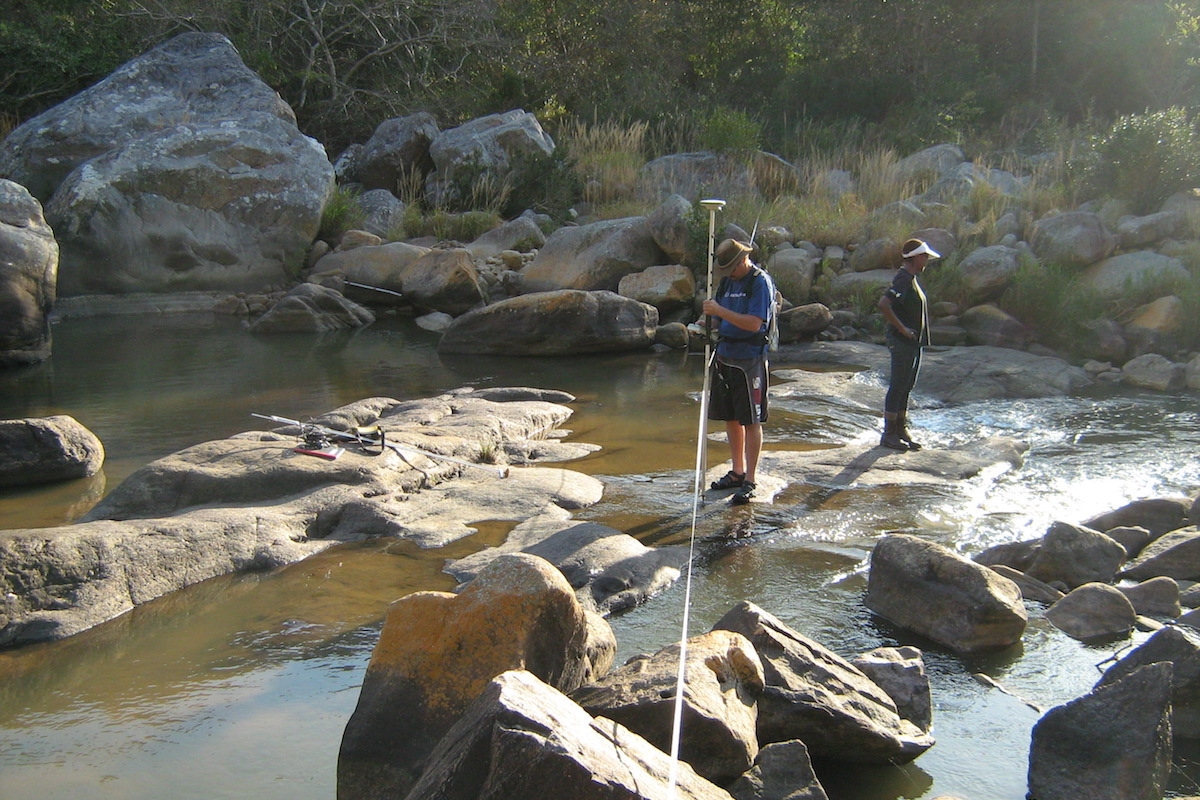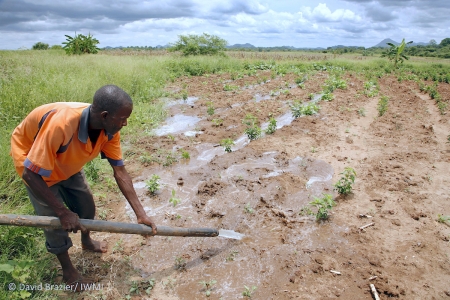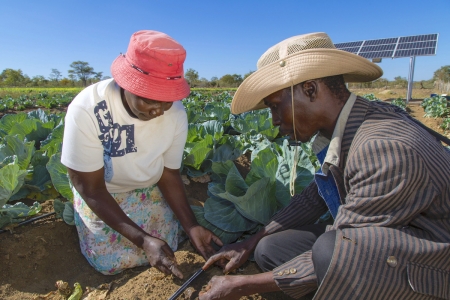Traditional river health monitoring is carried out in situ, with habitats and species assessed at specific sites and the findings integrated to provide a bill of health for the river. Yet as human activities have an ever-growing impact, there is an increasing need to monitor river health globally. The Sustainable Development Goals (SDGs), the Convention on Biological Diversity (CBD) and its Post 2020 Global Biodiversity Framework, and the UN Decade of Ecosystem Restoration all call for river health data at a global scale – far broader data than exist today.
Is it possible to zoom out to a global level, and if so, what methods and indicators are most appropriate? These were the questions discussed at two recent workshops convened by the International Water Management Institute (IWMI), CGIAR Research Program on Water, Land and Ecosystems (WLE) and World Wide Fund for Nature (WWF), engaging key scientists and practitioners working on river health around the world. In the words of Chris Dickens, lead IWMI scientist on the project, the workshops aimed to "critically review the overall concept, provide insights and lessons from existing and emerging methods, and chart a possible future for large-scale monitoring of river ecosystem health".
A world of rivers
Regional river health programs exist across Australia, China, the EU, New Zealand, South Africa and the USA, among others. Most are dependent on in-situ data which are not directly amenable to upscaling to the global level, require intensive and costly measurement programs, or appear limited in their ability to comprehensively indicate river health. However, their limitations do point to the key attributes a global framework should possess: standardized protocols and methods; clear definitions of river health; indicators spanning biology, water quality and physical processes; and scale independence.
A few initiatives are working on components of a global framework with these attributes. WWF's Living Planet Index is one such effort; according to lead scientist David Tickner, the index "measures average percentage change in size of discrete vertebrate populations, and is in fact a stock market for wildlife". Biodiversity is just one, but a very important, aspect of river health. WWF's Living Planet Report 2020 showed that 20,811 populations of 4,392 species monitored across the globe have declined in average abundance by 68% since 1970, and that freshwater biodiversity in particular has declined by 84%. These shocking findings triggered a high-level response from the CBD, which has launched an emergency recovery plan for freshwater biodiversity.

The CBD has also mandated the global Biodiversity Indicators Partnership to coordinate the development and delivery of biodiversity indicators supporting the Post 2020 Global Biodiversity Framework. As part of this initiative, more than 70 global partners are working on 80-plus indicators, assessing their suitability for the draft monitoring framework of the CBD.
Meanwhile, SDG indicator 6.6.1 – the change in extent of water-related ecosystems over time – makes it necessary to measures changes in freshwater ecosystems in terms of size, water quality and water quantity. These measurements can be tracked over time and by country on the Freshwater Ecosystem Explorer, for each type of freshwater ecosystem: lakes, rivers, wetlands and groundwater aquifers. The measurements draw on a mix of in-situ and Earth observation data. However, the monitoring fails to include a direct measure of river health.
The Task Force on Monitoring of the UN Decade on Ecosystem Restoration, consisting of 270 experts from 100 organizations, are also engaged in an initiative to develop a Framework for Ecosystem Restoration Monitoring (FERM). In fact, their FERM Geospatial platform is already available online. Draft river-related indicators that are currently being considered for monitoring and reporting connect this framework with targets of the SDGs, CBD and Ramsar Convention on Wetlands.

Pieces of a future framework
One of the key questions raised at the workshops was: "What purpose would a global river health scorecard/index/dashboard serve, and who would be the key audience for it?" The answers to this question ranged from "simple scientific inquiry" to "highlighting river health issues to (national and international) financial and political decision makers" and "guiding international policy frameworks."
The New Zealand Freshwater Biophysical Ecosystem Health Framework, developed in 2018, was put forward as a good blueprint for a global framework. It incorporates nearly all key biophysical attributes of river health, including components of water quantity, habitat, water quality, aquatic life and ecological processes. Each is measured and quantified through in-situ and Earth observation data. Regional councils are required to publish data on each component annually, providing reliable information to decision makers. The question is, how can robust data of this quality be acquired at the global level to replicate such a framework globally?
For biological data, the answer may lie in environmental DNA (eDNA) – traces of DNA that organisms leave in their environment. eDNA has revolutionized biological sampling by enabling the identification of species that exist in vast areas quickly and cheaply. Sampling may even be carried out by local communities and school children. The eBioAtlas is an initiative that uses eDNA from water samples to map the world's freshwater biodiversity. The initiative is hoping to analyze an initial 30,000 globally scattered samples, building an interactive database that can link with other key frameworks.
The real breakthrough for a global framework may come from combining eDNA with Earth observation data, crowdsourcing/citizen science and mathematical models that have predictive power to fill gaps in in-situ data. Examples of predictive mathematical models include the eDITH model, which combines Earth observation data and eDNA; and the Biodiversity Intactness Index, which predicts changes in biodiversity on terrestrial systems as an outcome of land use change and other pressures. Once the high-level framework is in place, many other details will need to be worked out: appropriate indicators; weights and even targets; checks to avoid sampling bias; ways of filling gaps in monitoring networks; methods to optimally use existing data; and the management and sharing of new data.
Another key topic discussed at the workshops was the importance of moving beyond biophysical indicators to establish links between humans and river health. For example, should indicators on ecosystem services, socio-cultural elements and human-induced threats and pressures be integral parts of global river health monitoring? Participants also highlighted the need to validate desktop indicators against true ecological integrity, and to acknowledge that with large data gaps in monitoring networks some indicators may not paint a true picture of river health at the global level.
IWMI and WWF are working to document the progress outlined above, and hope to establish a framework that can be used by researchers around the globe to take this initiative forward. Feedback from specialists in these fields is warmly welcomed. Please write to Chris Dickens at c.dickens@cgiar.org or Nishadi Eriyagama at e.eriyagama@cgiar.org.
Featured image caption: The Mkomazi River in South Africa looks close to its natural condition, but detailed monitoring shows deterioration in its health (photo: Chris Dickens).
---
Thrive blog is a space for independent thought and aims to stimulate discussion among sustainable agriculture researchers and the public. Blogs are facilitated by the CGIAR Research Program on Water, Land and Ecosystems (WLE) but reflect the opinions and information of the authors only and not necessarily those of WLE and its donors or partners.
WLE and partners are supported by CGIAR Trust Fund Contributors, including: ACIAR, DGIS, FCDO, SDC, Sida and others.













